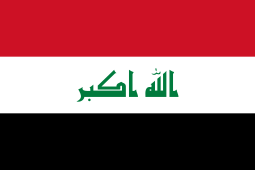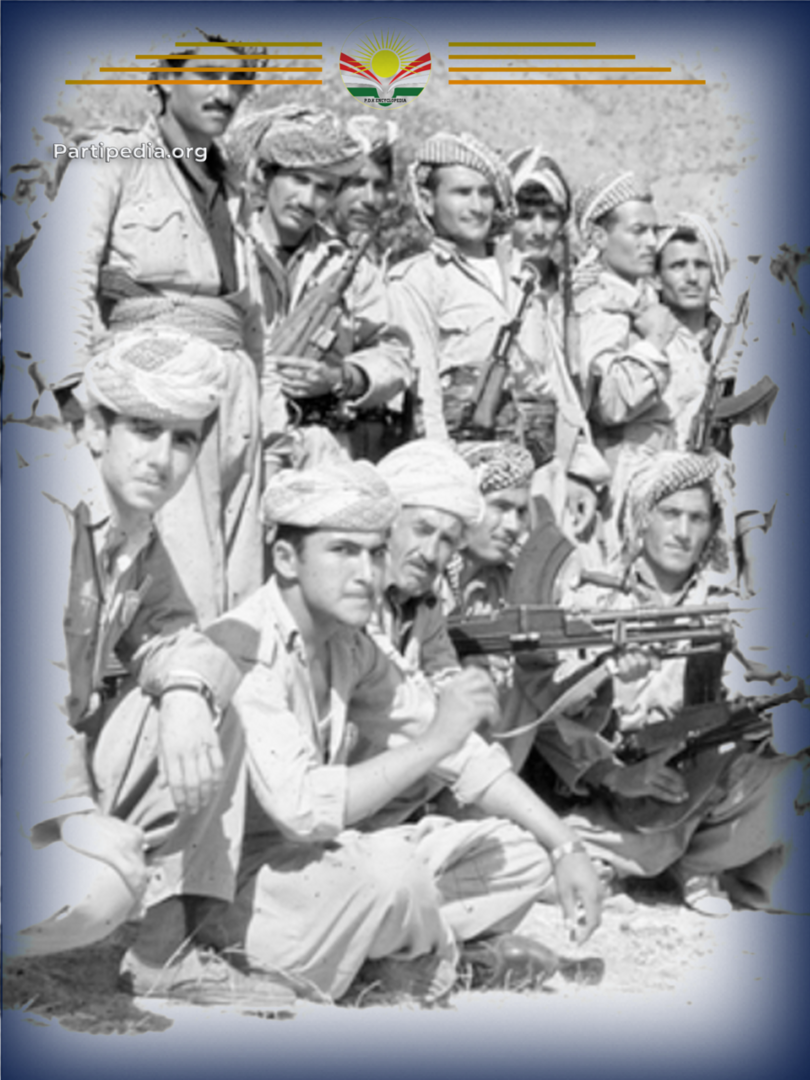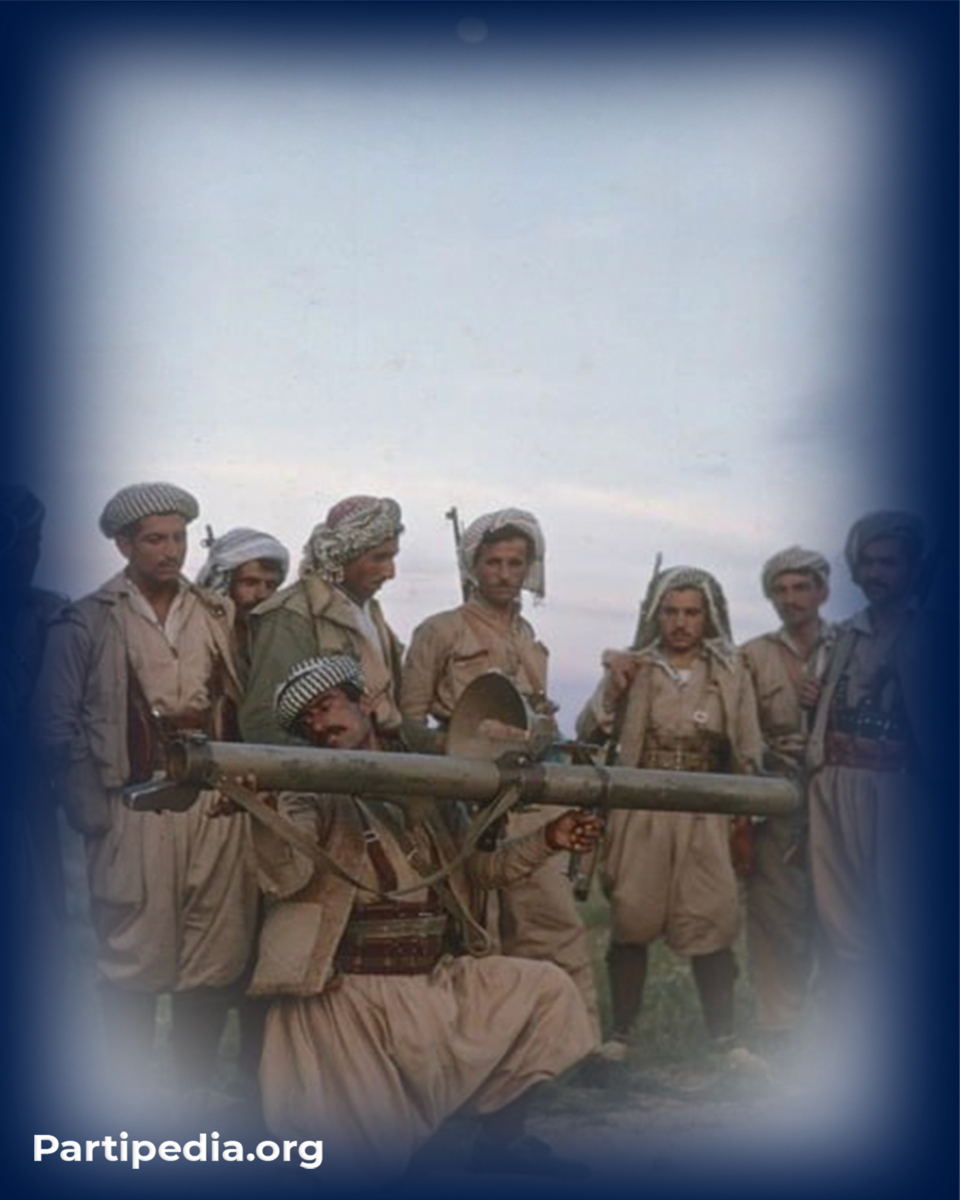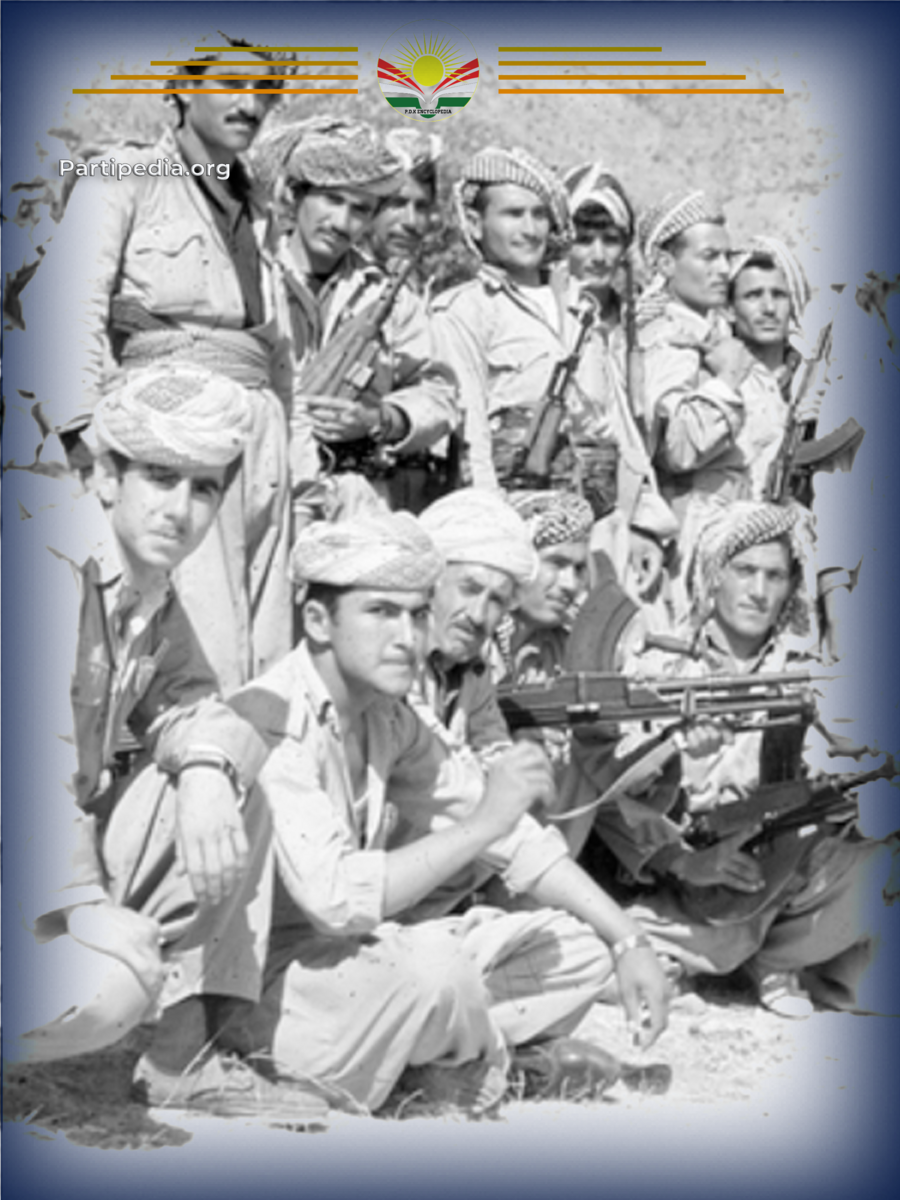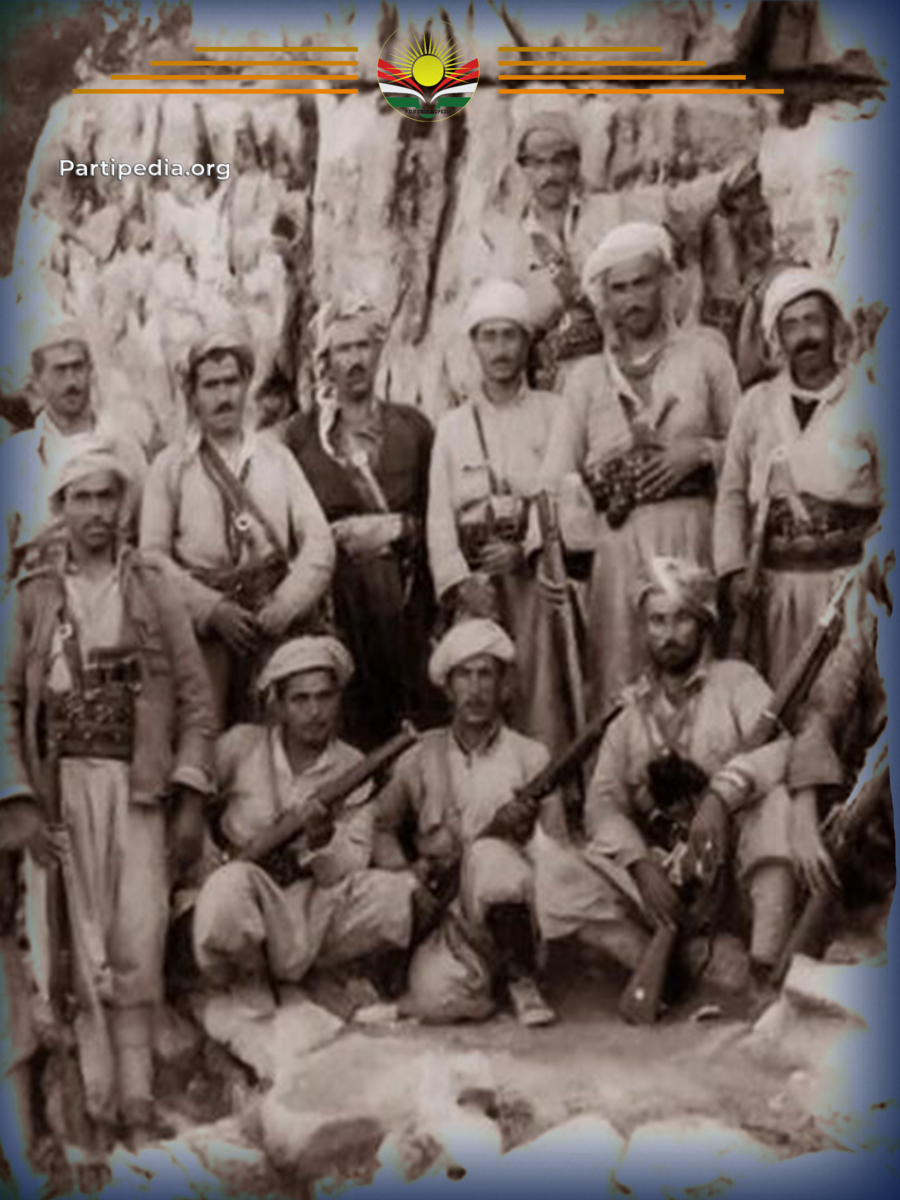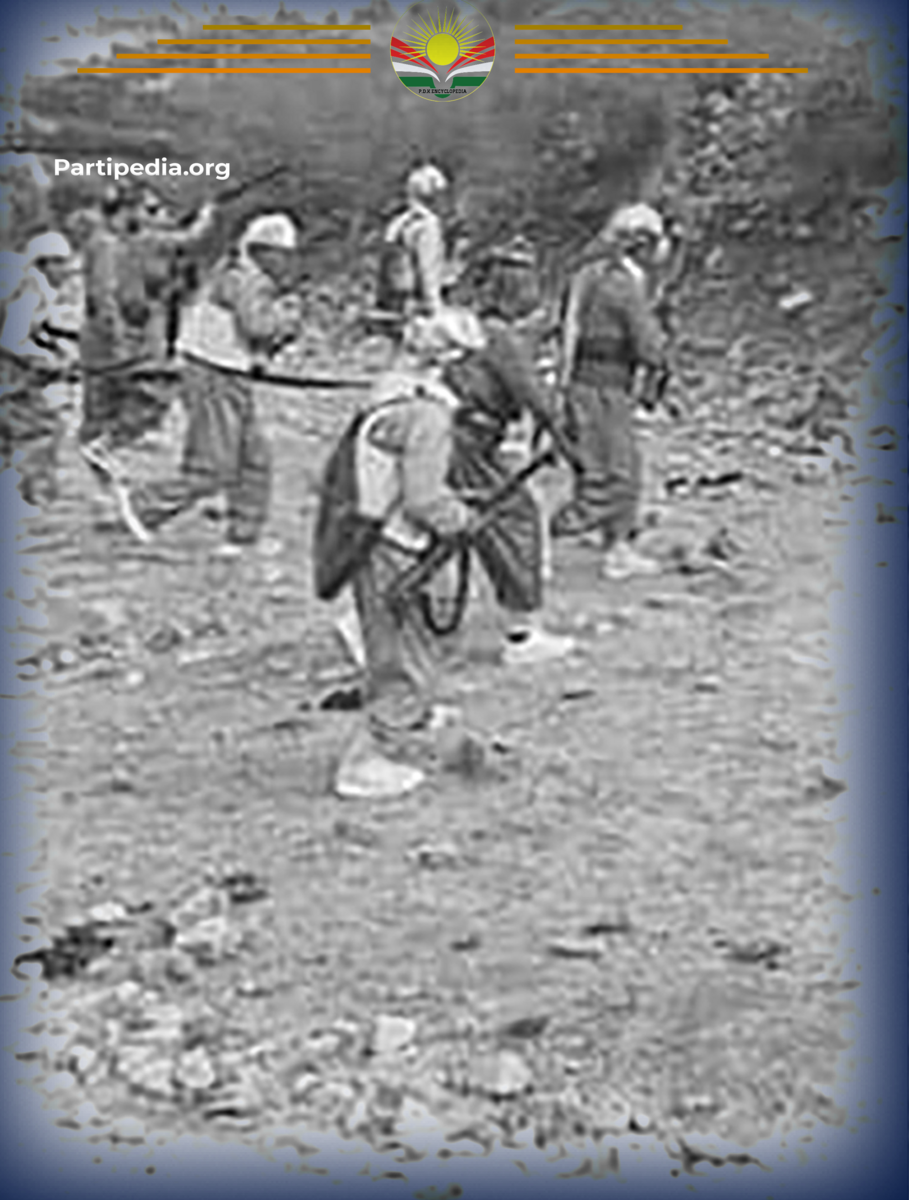In June 1963, the Iraqi government intensified its efforts to end the Kurdish revolution by resuming its attacks on the revolutionary areas in various parts of Kurdistan. After the Iraqi army and mercenaries (jash) in the front of Akre were able to take control of Sarê Akre and Mount Pers, Mullah Shini, the commander of the Peshmerga forces, and five other Peshmergas were martyred in the heavy shelling. This had a negative impact on the morale of the Peshmerga. The Peshmerga forces left these positions and retreated to Ble and Rezan to build another line of defense to prevent the Iraqi army from entering Barzan, their whole intention was to reach and destroy it.
On July 31, 1963, the 1st Division of the Iraqi Army, consisting of the 1st and 4th Brigades, and the participation of 7,000 mercenaries (jash) of Zebari, Surchi, Goran, Harki, Sharafani, Yezidi, Kochar and Barwari. They marched from the foothills of Mount Pers to Ble, crossed the Great River (Zey Gawra), captured Ble and its surroundings, and established themselves on both sides of the river. At that time, Barzani's headquarters was still in Gali Dalash, east of Safte village, when the Iraqi army bombed the headquarters with several warplanes. With the intention of arresting Mustafa Barzani, the leader of the Kurdistan Revolution, and Massoud Barzani, who was accompanying him, along with 15 Peshmerga guards. However, they were able to resist them and defend themselves from the attack of the army and jashes and survive.
At that moment, the revolutionary leadership attained a telegram that the Iraqi army intended to attack Barzan on August 4. Barzani ordered the establishment of a line of defense in Mle Sarije between Ble and Barzan to prevent the Iraqi army from entering Barzan and destroying it, and to prevent the government to be happy with its intentions. Because Barzani himself was there and directly supervised the fighting. To establish the line of defense, he instructed the Peshmerga commander Hussein Mergasuri to take responsibility for the battle front. He should establish their positions in the Mle Sarije and prevent the advances of the government army and jashes from reaching Barzan.
Hussein Mergasuri ordered the Peshmergas and distributed them into positions and waited for zero hour in the middle of the defensive line. Before the attack began, the government bombed the Peshmerga positions with artillery and aircraft for a day and a night. Then, on the morning of August 4, 1963, they attacked the Peshmerga positions with a large and widespread attack and all kinds of heavy and light weapons. The Peshmergas confronted them with the light weapons they had, which included a machine gun and a number of British Bruno pistols. After 10 hours of fighting, the Peshmerga forces managed to defeat the attack of the army and jashes with the loss of dozens of dead and wounded and forced them to retreat, leaving the bodies of 40 dead on the battlefield. However, from peshmarga force Hussein Mergasuri, the Peshmerga commander, and three Peshmergas were martyred and another was wounded.
Two days later, on August 6, government forces turned east to capture Rezan, another arm of the line of defense under the command of Uzer Dolamari, Omar Agha Dolamari and Hali Dolamari, who were accompanied by about 200 Peshmergas. After heavy bombardment around the Rezan Bridge, the army and jash forces began to move towards the bridge. The Peshmergas were hiding in their positions until the soldiers and jash reached the bridge and some of them crossed they suddenly attacked them with a barrage of gunfire. The soldiers and mercenaries were confused and their ranks were disrupted. Their attack was broken and they fled. This time they left the bodies of 36 dead on the battlefield, 14 of whom fell into the Great river (Zey Gawra) and washed away.
It is obvious that the Peshmerga forces had a 3-knot mortar shell with only 12 bullets, 6 of which were fired at the enemy and 6 of which were carried. But fortunately for the Peshmergas, the first bullet had hit a group of jashes and killed some of them, creating a dangerous situation for the army and the jashes.
After the failure of the government forces in the attack, they considered another attack on the village of Hostan in eastern Barzan. The Peshmerga forces under the command of Sako Kanialnji, who replaced Hussein Mergasuri, along with other Peshmerga officials, fortified the positions and established a line of defense. They promised to prevent the government army from implementing its plans. First, as always, the Iraqi army began heavy shelling of fronts and air strikes. Then, on the morning of August 8, 1963, they launched a massive offensive. The Peshmerga forces quickly defeated the attack and made them to fled the battlefield with dozens of dead and wounded. The Peshmerga forces had only one martyr and two wounded.
After the attack on August 10 and the following days, two more attacks by the Iraqi army and mercenaries (jash) launched a campaign to the heights behind the village of Asta to take control of the village of Rezan. However, they failed to succeed in both attacks, but were severely defeated, they had casualties of killed and wounded and four of their soldiers were taken hostage. It is worth mentioning that Barzani, the leader of the Kurdistan Revolution, always closely supervised the fighting.
The Iraqi government, in revenge for all its successive defeats, continued to shell and bombard Barzan and the surrounding villages until it destroyed them.
After the defeat and heavy losses on both fronts of the battle of Barzan and Sherwan the Iraqi army suffered, The situation of the Iraqi army was very distorted and shocked, so Lieutenant Colonel Ibrahim Faisal Ansari, commander of the second division in the Chama and Sherwan Mazen fronts, informed Tahir Yahya with a telegram, the chief of the army staff, and proposed a peaceful solution. The chief of staff expressed his unreluctance and told them to contact Sheikh Ahmad Barzani. On September 22, 1963, Ansari sent a letter to Sheikh Ahmad through Saeed Asad Shetn, asking him to send a delegation to him and the governor of Erbil for negotiations and an agreement. After consulting with the revolutionary leader Mustafa Barzani, Sheikh Ahmad decided to respond to Ansari with a letter.
As a result of the talks between Sheikh Ahmad and the Iraqi government, which called for the disarmament of the Barzanis, Sheikh Ahmad called for the withdrawal of the army and jash from the government. As a result, they agreed that Barzani left Barzan area on October 10, 1963 at the request of Sheikh Ahmad and returned to Soran and Balakayety area. The government's military offensive against the Barzan region ended and peace prevailed in the region.
Sources:
١. هۆژین مەسعود سەرنى، شورەشا ئیلونێ ل دەڤەرا بەهدینان ١٠٦١- ١٩٧٥، چاپى یەکەم، ٢٠١٨.
٢. حاجى میرخان دۆڵەمەرى، گەڕان بەدواى دادپەروەریدا، بەرگى یەکەم، چاپى دووەم، چاپخانەى اسراء، تاران، ٢٠٢١.
٣. مسعود بارزانی، بارزانی و بزوتنەوەى ڕزگاریخوازی کورد، بەرگی سێیەم، بەشی یەکەم، شۆڕشی ئەیلوول ١٩٦١-١٩٧٥، چ: یەکەم ٢٠٠٤.
٤. وەلى زبێر هۆستان، چەند ڕووداو و بەسەرهاتێک لە شۆرش و ڕاپەڕینەکانى بارزاندا، چ: یەکەم، چاپخانەى ڕۆژهەڵات، هەولێر، ٢٠١٧.
٥. کاروان جوهر محمد، ئیدریس بارزانى ١٩٤٤- ١٩٨٧ ژیان و ڕۆلى سیاسیى و سەربازى لە بزوتنەوەى ڕزگاریخوازى کورددا، چاپخانەى هێڤی، هەولێر، ٢٠١٩.
٦. غازى عادل گەردى، پێشمەرگەیەک لە خزمەت ڕێبازى بارزانیدا حەجى بیڕۆخى، بەرگى یەکەم چاپى دووەم، تورکیا، ٢٠٢١.
٧. هاشم شێڕوانى، دەڤەرا بارزان، جوگرافیا- دیرۆک-کەلتور، چاپى یەکەم چاپخانەى وەزارەتى ڕۆشەنبیرى، هەولێر، ٢٠٠٨.

